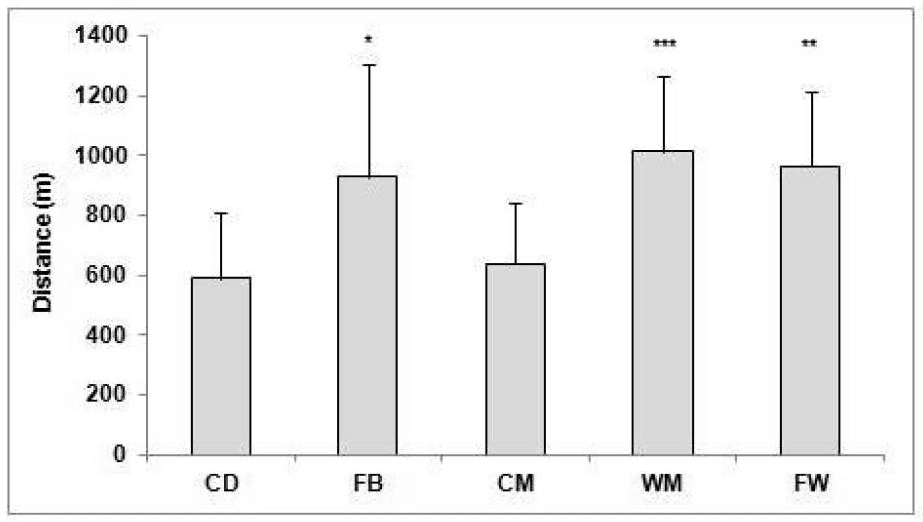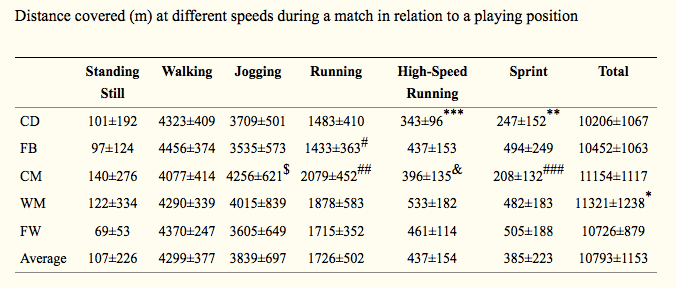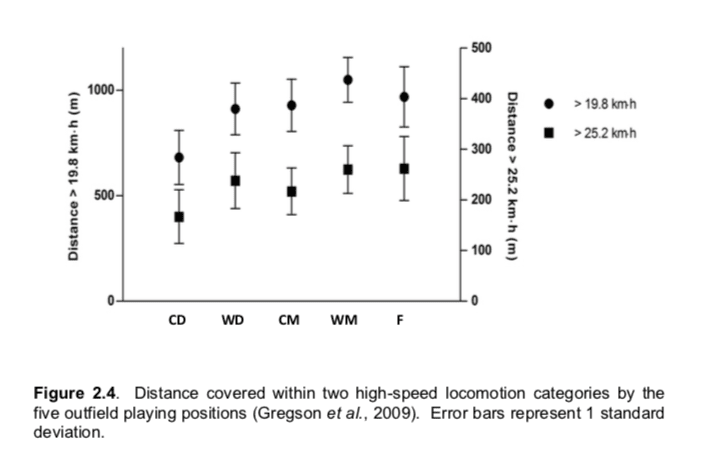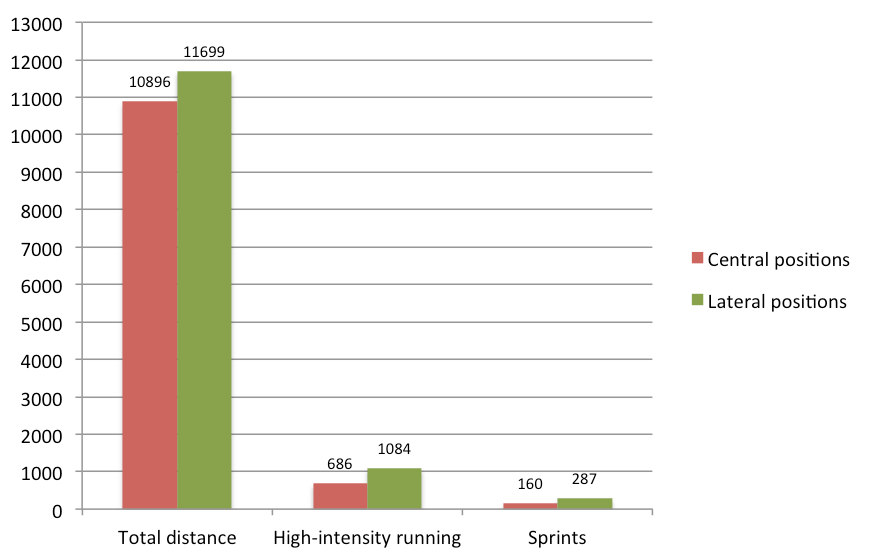Football is a highly demanding sport in terms of the physical demands. Whereas other sports often afford either more dynamism and pace or endurance, the football game requires players with a good endurance who are also capable of accelerating quickly.
Different positions have different physical demands. In the following data analysis, we will take a look at the position-specific physical demands in football. In order to do so, we will use statistics and different studies to give evidence. Moreover, we are going to explain the impact of tactics on the physical aspects and why physicality is of such big importance in football.
Physical aspect: endurance
In comparison to other sports, the playing time of football is quite long. As a consequence, endurance plays an important role for performance. And although sprints play an important role, they only represent a small amount of the total distance covered of any player. According to Stolen et al. (2005), for instance, sprints only make 1-11% of the total distance covered during a game.
According to Broich et al. (2008), elite football players cover an average of 11,393 metres per game. Therefore, endurance is of big importance. As one can see in the following graphic (Mallo et al. 2014), the total distance covered is dependent on the position. One can clearly see that wide players cover more distance than central players.

The table below (Mallo et al. 2014) shows how the total distance is split upon the different categories “standing still”, “walking”, “jogging”, “running”, “high-speed running” and “sprint”.

Independent of the position, all players cover the most distance by walking. And apart from the forwards, all players cover the least distance with sprinting. Due to that, football is mostly aerobic. Mayhew and Wenger (1985) even stated that football is 88% aerobic in nature. Nevertheless, with its high-speed running and sprints, football also includes high-intensity efforts and therewith is an intermittent sport.
Physical aspect: pace
But besides endurance, one of the most important physical aspects in football is the pace. Especially within the last years, this component has become even more important due to the tactical evolution of the game. The increased use of counter-pressing has made the game even faster. As a consequence, sprints during these moments can be decisive whether to win back the ball or to be caught in a counter-attack.
In a study, conducted by Gregson et al. (2009), the high speed running distances of Premier League players have been examined. The results, displayed below, showed that the forwards and the wingers cover the most distance with high speed running, followed by the full-backs. Centre-backs cover by far the fewest metres with high speed running.

Ingebrigtsen et al. (2014) found out that lateral players, in general, cover more distance and perform more high-intensity-runs as well as sprints, as one can see below.

It seems that the central defenders do not have to sprint as often as wider players since they have to positioned at the right place all the time. Nevertheless, this should not lead to the assumption that pace is less important for central defenders. They simply sprint less often than attackers. However, the rare moments when centre-backs need to sprint can be very decisive.
When we talk about sprints in football, they differ from the sprint of a track runner though. Apart from the different environment, the distance is fewer. According to Stolen et al. (2005), only 4% of the sprints are 30 metres or longer. And the following findings prove, again, that this differs from position to position.
“The most common distance covered in high-intensity runs (≥19.8 km·h−1) for central backs, central midfielders, wide midfielders and central forwards was 1–5 m, but for full-backs was 6–10 m.” (Baptista et al. 2018)
Furthermore, with regard to training, there are aspects besides the speed strength which influence the speed of action such as the reaction time. Therefore, it is useful also to train the sprints within the game context in order to improve reacting to certain signals in match-like scenarios.
The role of tactics
One should always bear in mind that physical and psychological aspects as well as technique and tactics are always connected. Whereas a decrease in fitness might lead to a loss of concentration, a certain tactical approach can change the physical demands for the players.
It is not a big coincidence that Borussia Dortmund under Jürgen Klopp in 2013/14 were the side with the most sprints in the Bundesliga. With 7,973 sprints, they ranked first in terms of the total number of sprints in the Bundesliga season 2013/14 according to Statista. Klopp was already known for his intensive style of play including tactics such as “Gegenpressing” which required a lot of sprints. In comparison to that, champions Bayern Munich only ranked seventh with a total of 7,263 sprints in the Bundesliga campaign 2013/14. This could be due to their dominance in possession. According to WhoScored, they averaged an impressive 66.2% possession which meant that they had to chase less often after the ball.
Even the formation can have an impact on the sprint distance. A study from Bradley et al. in 2011 found out that teams playing in a 4-5-1 formation perform more very-high-intensity running out of possession compared to a 4-4-2 or 4-3-3 formation and less in possession.
This short paragraph should only show how the physical demands are always connected with the tactics and that they should never be looked at separately. Ideally, even in training there should be a connection between tactics and conditioning. The tactical periodisation model, for instance, allows the connection of both.
Conclusion
Of course, there are more demands in football than just endurance and pace. The jumping ability, for instance, can also be a limiting physical factor. However, we have mainly focused on endurance and pace as they are the most essential physical factors.
All in all, football demands not only complex techniques and tactics, but also fit players. Our analysis has shed some light on the physical demands of the game and how they differ from position to position. Last but not least, we’ve also shown that tactics are connected with the physical factors. Therefore, the physical demands should also always be regarded when creating a game plan or playing methodology.




Comments